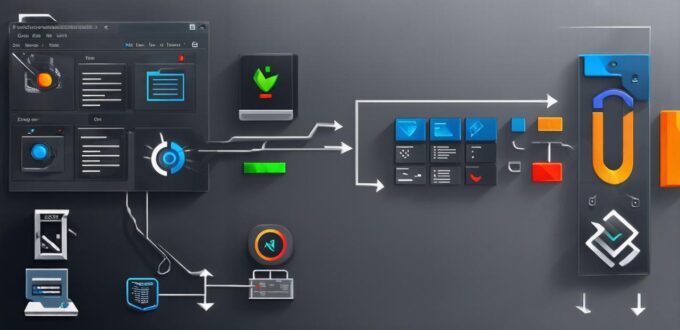As software development continues to evolve and expand into new markets, it’s important to understand how software is categorized in order to effectively target your audience and develop products that meet their needs. In this article, we will explore the different ways in which software is classified and categorized, including by type, function, industry, and more.
Classifying Software by Type
One of the most common ways to categorize software is by type. This can include applications, tools, frameworks, libraries, and more. Each type of software serves a specific purpose, and understanding these different categories can help you better target your audience and develop products that meet their needs. For example, an application might be a desktop or mobile app, while a tool might be used for data analysis or graphic design.
Classifying Software by Function
In addition to being categorized by type, software can also be classified by function. This can include productivity tools, communication tools, entertainment tools, and more. Each category of function-based software serves a specific purpose and can help streamline workflows or enhance personal experiences. For example, a productivity tool might help with project management or task tracking, while a communication tool might facilitate collaboration between team members.

Classifying Software by Industry
Software can also be classified by industry, such as healthcare software, finance software, and education software. Each industry-specific category of software is designed to meet the specific needs of that particular market, and understanding these different categories can help you better target your audience and develop products that are tailored to their needs. For example, a healthcare software application might be used for patient record management or telemedicine consultations, while a finance software tool might facilitate financial analysis or reporting.
Classifying Software by Platform
Another way to categorize software is by platform, such as Windows, Mac, Linux, iOS, and Android. Each platform has its own unique set of features and capabilities, and understanding these different categories can help you better target your audience and develop products that are compatible with their preferred platform. For example, a mobile application might be designed for both iOS and Android platforms, while a desktop application might use C++ or Java.
Classifying Software by Development Language
Software can also be classified by development language, such as Java, Python, Ruby, and more. Each programming language has its own unique set of features and capabilities, and understanding these different categories can help you better target your audience and develop products that are compatible with their preferred language. For example, a web application might be developed using JavaScript or PHP, while a desktop application might use C++ or Java.
Classifying Software by Deployment Model
Finally, software can also be classified by deployment model, such as on-premises or cloud-based. Each deployment model has its own unique set of features and capabilities, and understanding these different categories can help you better target your audience and develop products that are compatible with their preferred deployment model. For example, an enterprise application might be deployed on-premises, while a small business application might be deployed in the cloud.
Case Studies: How Software is Categorized in Practice
To gain a deeper understanding of how software is categorized in practice, let’s take a look at a few real-life examples.
Example 1: Productivity Tools for Remote Work
One example of how software is classified in practice is through the use of productivity tools for remote work. With more and more people working from home these days, there is a growing demand for tools that help streamline workflows and enhance collaboration between team members. In this category, we might see applications such as Zoom (a communication tool), Trello (a project management tool), and Asana (a task tracking tool). Each of these tools serves a specific purpose and can help remote workers stay organized and productive.
Example 2: Healthcare Software for Telemedicine Consultations
Another example of how software is classified in practice is through the use of healthcare software for telemedicine consultations.
